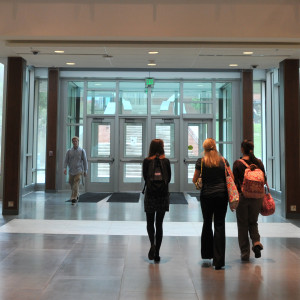 The study of human nature and interaction came to life with sometimes stunning impact at the Visual Anthropology program’s film festival in the College of Liberal Arts Building on May 20.
The study of human nature and interaction came to life with sometimes stunning impact at the Visual Anthropology program’s film festival in the College of Liberal Arts Building on May 20.
Twenty students produced films exploring the marginalized, the misunderstood and the discriminated against. Topics for the films ranged from unfair development and labor practice in Baltimore City to the world of “modified people” to the callousness toward sexual assault in college Greek life.
Those who watched the films were noticeably squeamish as they witnessed dramatic and uncensored video of lip and back piercings endured by “modified people.” But that’s the point of visual anthropology: showing people what they otherwise might intentionally avoid, in an effort to help them better understand another person.
“Anthropology is the study of human experience,” says Harjant Gill, assistant professor in the Department of Sociology, Anthropology and Criminal Justice. “It’s good to teach ethnographic research.”
Students worked on the project throughout the semester, with two weeks to write a proposal, then exchange it with another student for editing. Gill eventually approved half the proposals for production, then matched up students with similar interests. That’s how Cynthia Parker ’15 and Emily Voorhees ’15 wound up working together on “She’s Asking For It,” a film about the all-too common sexual assaults that occur within the confines of Greek life.
Gill says he pushes his students to do things outside their comfort zone, which is how they all wound up producing films. “A lot of them know how to write a good paper and make a professor happy,” Gill says. “But this is going to be on the internet and reflect on them. So they take it seriously.”
The entrants in the festival were judged by two faculty members and the winning film was “Bare,” a seven-minute production about people who choose to go barefoot in settings and situations where few others would. But each film sought to expose the prejudices against a chosen group and bring about better understanding.
“A lot of people take this opportunity to look inward, which is very powerful,” says Gill. He explains that students’ first projects are often autobiographical and deeply revelatory, fostering an intimacy in his classes as well as a connection between students.
“In anthropology we know you can’t really understand others until you know who you are.”
View all the Visual Anthropology films on the program’s YouTube channel.
